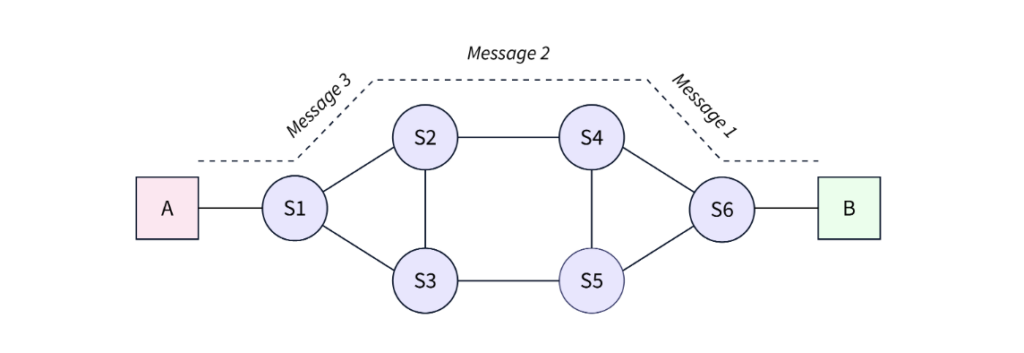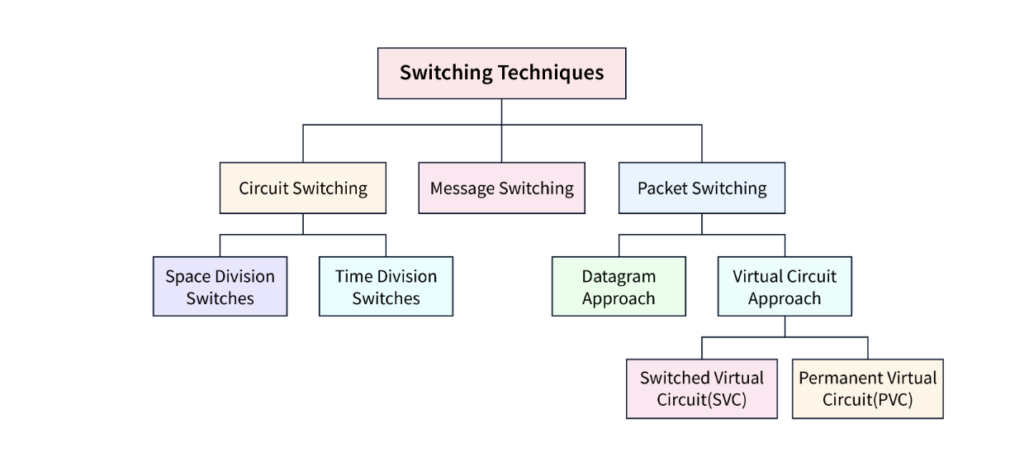Table of Contents
In this article, you’ll learn about Switching in Computer Network, Advantages of Switching, Disadvantages of Switching, Types of Switching and more.
What is Switching in Computer Network?
Switching is a mechanism in which a user accesses the internet or another computer network outside their immediate location, messages are sent through the network of transmission media. This technique of transferring the information from one computer network to another network is known as switching.

- Switching in a computer network is achieved by using switches. A switch is a small hardware device that is used to join multiple computers together with one local area network (LAN).
- Network switches operate at layer 2 (Data link layer) in the OSI model.
- Switching is transparent to the user and does not require any configuration in the home network.
- Switches are used to forward the packets based on MAC addresses.
- A Switch is used to transfer the data only to the device that has been addressed. It verifies the destination address to route the packet appropriately.
- It is operated in full-duplex mode.
- Packet collision is minimum as it directly communicates between source and destination.
- It does not broadcast the message as it works with limited bandwidth.
Advantages of Switching
- Switch increases the bandwidth of the network.
- It reduces the workload on individual PCs as it sends the information to only that device which has been addressed.
- It increases the overall performance of the network by reducing the traffic on the network.
- There will be less frame collision as switch creates the collision domain for each connection.
Disadvantages of Switching
- A Switch is more expensive than network bridges.
- A Switch cannot determine the network connectivity issues easily.
- Proper designing and configuration of the switch are required to handle multicast packets.
Types of Switching

How Does Switch Work
The switch generally involves the following steps
- Reception of Frames: A device connected to the switch’s ports sends a data frame or packet to the switch.
- Extraction of MAC Addresses: The destination MAC address is retrieved by the switch by reading the data frame’s header.
- MAC Address Table Lookup: The switch searches its switching table after obtaining the MAC address to locate a port that connects to the MAC address of the data packet.
- Forwarding Decision and Switching Table Update: At this stage, the switch starts matching the destination MAC address of the frame to the MAC address in its table. If a case arises where the destination MAC address does not match or exists in the table in the forwarding table, it starts the flooding process. In this process, the switch starts sending the data frame to all of its ports except the one the frame came from. After this, the switch records all the MAC addresses to which the frame was delivered. With the help of this, the switch can easily find the new MAC address and update it accordingly in its forwarding table.
- Frame transition: Once the destination port is found, the switch sends the data frame to that port and forwards it to its target device/network.
Why is Switching Required
Here are the following reasons that define why switching is needed:
- Bandwidth: It refers to the maximum transmission rate of the cable and is an essential and expensive resource. Therefore, switching is required to utilize the bandwidth of the network effectively.
- Collision: It means that impact occurs when more than one device shares messages on the same physical media, and they collide with each other. That is why, to solve this problem, switching is required through which packets do not collide with each other.